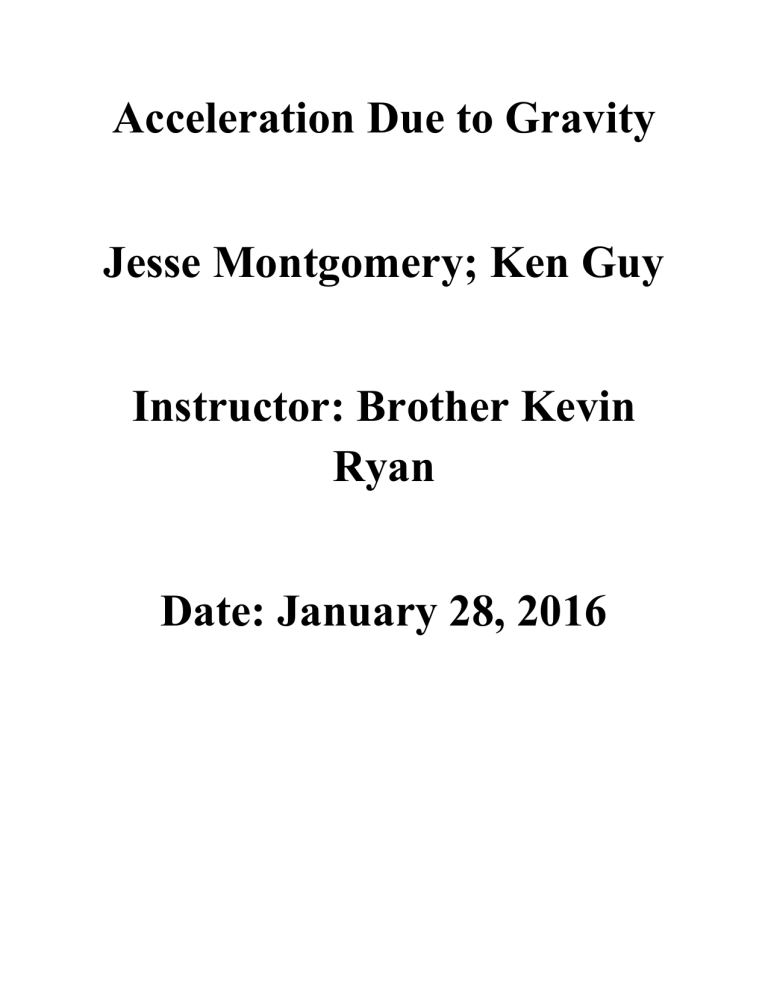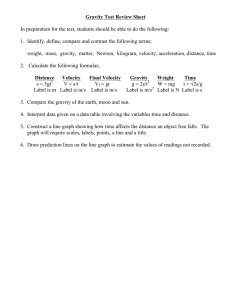Acceleration Due to Gravity Lab Report
advertisement

Acceleration Due to Gravity Jesse Montgomery; Ken Guy Instructor: Brother Kevin Ryan Date: January 28, 2016 Acceleration Due to Gravity Purpose The purpose of this lab was to study accelerated linear motion and determine the acceleration due to gravity g. Definitions (Formulas) To start, we needed to define some formulas first. Which are as follows: (1) velocity= distance/time (2) acceleration= change in velocity/ change in time Experiment What was done We took a piece of blue tape cut at about arm's length, put something heavy on the end, and placed one end of it in between two high voltage wires. One person stood on a stool and when he was ready, the other person pushed the button that turned on the high voltage. As soon the high voltage was turned on, the other person dropped the tape resulting in dots appearing all the way down the tape. Then we took the tape and laid it flat on the table and used a yard stick to measure the positions of each of the dots. After that, we used the information we gathered to calculate the velocity which we then converted to acceleration. Numbers Dot Time (sec) Position (cm) 0 0 0 1 1/30 1.5 2 2/30 3 Change in cm Change in sec. 1/30 Velocity 1.5 1/30 45 3 1.5 1/30 96 3/30 6.2 3.2 1/30 123 4 4/30 10.3 4.1 1/30 159 5 5/30 15.6 5.3 1/30 186 6 6/30 21.8 6.2 1/30 222 0 Change in Velocity Acceleration 45 51 27 36 27 36 1350 1530 810 1080 810 1080 Here is the data for our first six dots. Conclusion Our data showed that the force of gravity does cause things to accelerate. So our hypothesis was correct in stating that gravity causes acceleration. General Conclusion Gravity causes things to accelerate towards the center of the earth. As we have just showed through our data, gravity pulls things down faster than they originally were going when they fell. This is why rollercoaster go so fast because they take advantage of the force of gravity. Also gravity makes things appear to weigh more than they actually do because of this downward pull.


